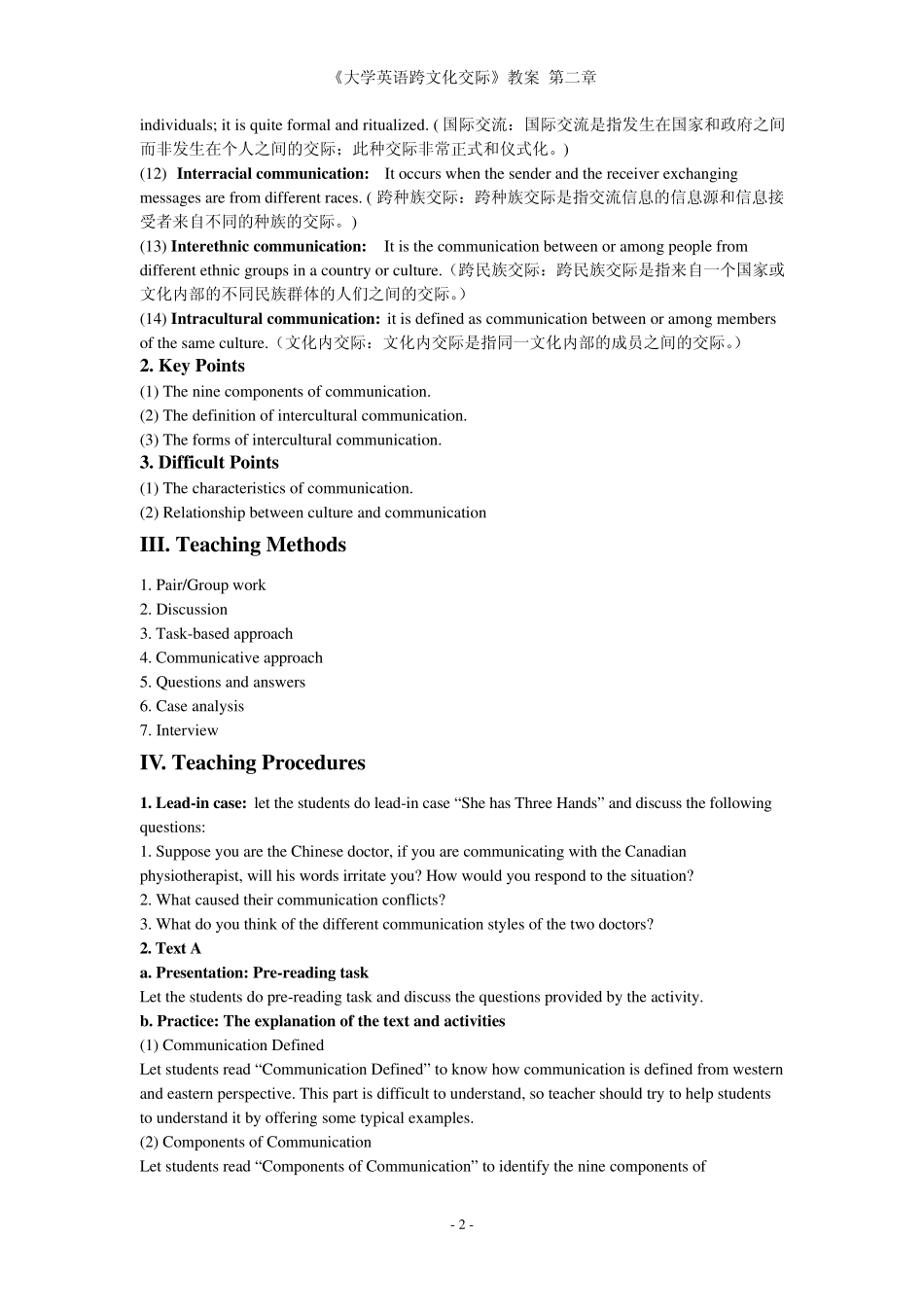《大学英语跨文化交际》教案 第二章 Chapter 2 Communication and Intercultural Communication I. Teaching Objectives In this chapter, the teacher should enable the students to: 1. know different definitions of communication. 2. identify nine components of communication. 3. identify the characteristics of communication. 4. know the relationship between culture and communication. 5. know the definition of intercultural communication. 6. identify the 4 forms of intercultural communication. II. Contents 1. Keywords (1) Sender/Source: A sender/source is the person who transmits a message. (信息发出者/信息源:信息发出者/信息源指传递信息的人。) (2) Message: A message is any signal that triggers the response of a receiver.(信息:信息指引起信息接受者反应的任何信号。) (3) Encoding : It refers to the activity during which the sender must choose certain words or nonverbal methods to send an intentional message. (编码:编码指信息发出者选择言语或用非言语的方式发出有目的的信息的行为。) (4) Channel/Medium:It is the method used to deliver a message. (渠道/媒介:渠道/媒介指发送信息的方法。 ) (5) Receiver: A receiver is any person who notices and gives some meaning to a message. ( 信息接受者:信息接受者指信息接收者是指注意到信息并且赋予信息某些含义的人。 ) (6) Decoding: It is the activity during which the receiver attaches meaning to the words or symbols he/she has received.(解码:解码指信息接受者赋予其收到的言语或符号信息意义的行为。) (7) Feedback: The response of a receiver to a sender’s message is called feedback. (反馈:反馈指信息接收者对信息源信息所做出的反应。) (8) Noise: It is a term used for factors that interfere with the exchange of messages, including external noise physiological noise, psychological noise and semantic noise. (干扰:干扰指妨碍信息交流的各...


